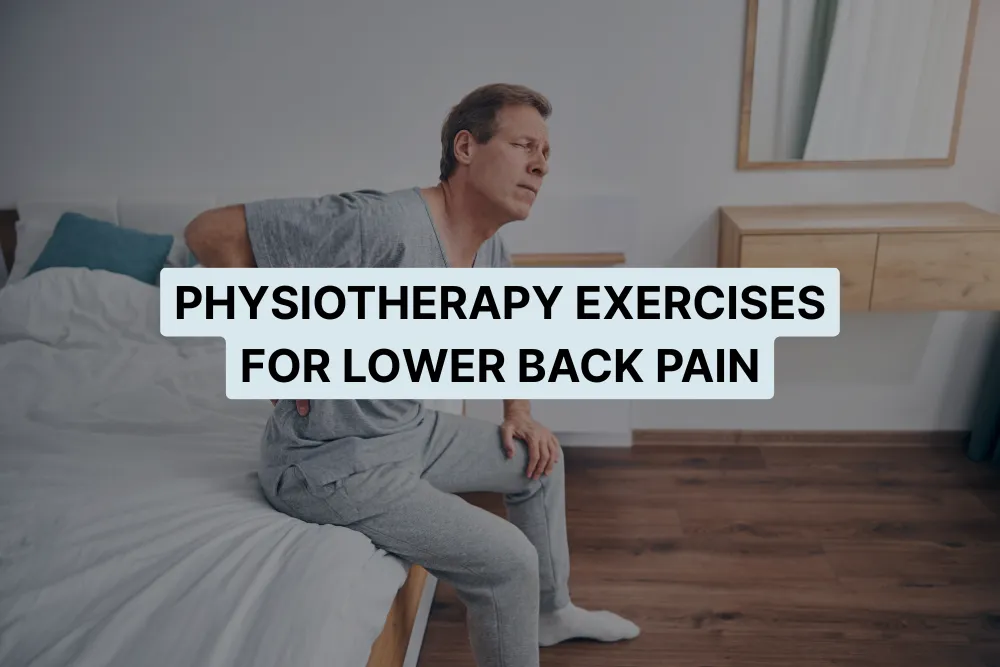Lower back pain affects millions of people every day, from office workers hunched over computers to athletes pushing their limits. The causes are as varied as the people experiencing it. Sometimes it’s a sudden movement that triggers sharp pain, other times it develops gradually from years of poor movement habits or muscle imbalances. What starts as minor discomfort can quickly escalate into something that makes simple tasks like getting out of bed or picking up groceries feel impossible.
The good news is that most back pain responds well to physiotherapy. Rather than masking symptoms with medication or avoiding movement altogether, physiotherapy gets to the heart of what’s causing the problem.
How Physiotherapy Helps with Back Pain
Lower back pain is rarely just about the back itself. Physiotherapy for back pain helps by addressing the root causes rather than just the symptoms. In most cases, some parts of the spine get stiff and stop moving properly, while other areas try to make up for the problem by moving too much. This creates a pattern that keeps the pain going.
Treatment starts by getting those tight areas moving again through hands-on techniques. But just as important is working on the deep muscles that support the spine. These muscles often “switch off” when pain is present, leaving the back without proper support. Once pain becomes long-term, the nervous system can get oversensitive, making everything feel worse than the situation actually is.
Exercises You Can Do (With Examples)
Physiotherapists often prescribe simple, low-risk exercises you can practice at home to complement in-clinic sessions. Here are a few beginner-friendly examples:
1. Pelvic Tilts
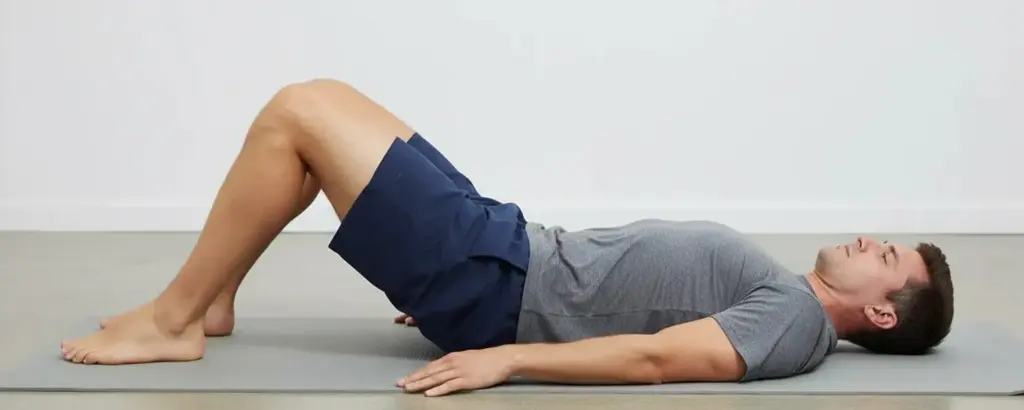
- Lie on your back with knees bent and feet flat.
- Gently tighten your abdominal muscles and press your lower back into the floor.
- Hold for 5 seconds, then relax.
- Repeat 10–15 times.
2. Knee-to-Chest Stretch
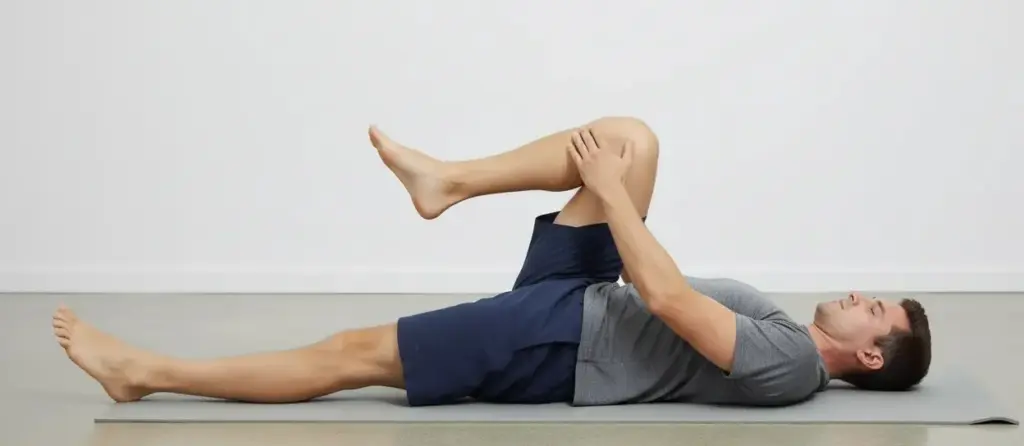
- Lie on your back, bend one knee, and gently pull it toward your chest.
- Hold for 20–30 seconds, then switch sides.
- Repeat 2–3 times each side.
3. Child’s Pose
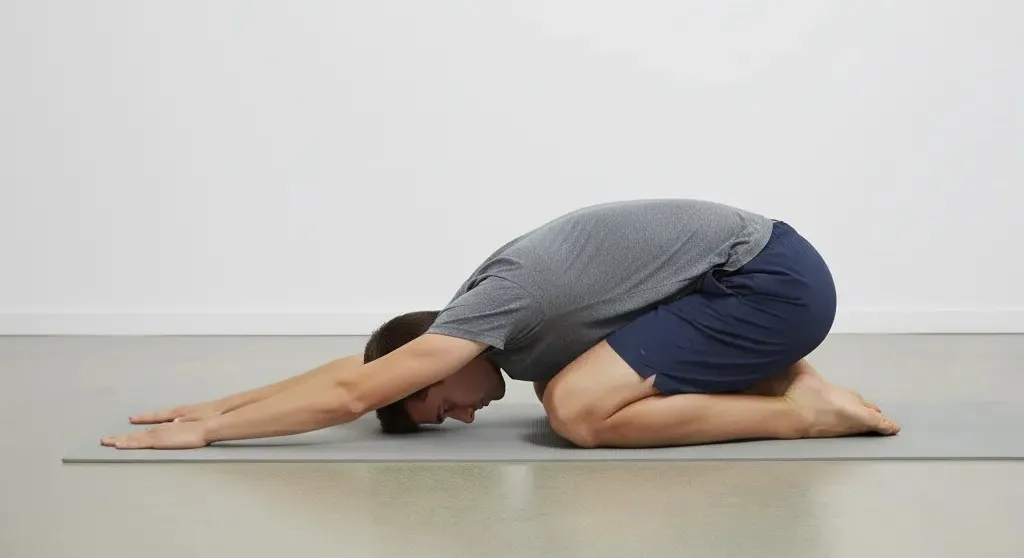
- Kneel on the floor, sit back on your heels, and stretch your arms forward.
- Hold for 20–30 seconds while breathing deeply.
4. Bird-Dog Exercise
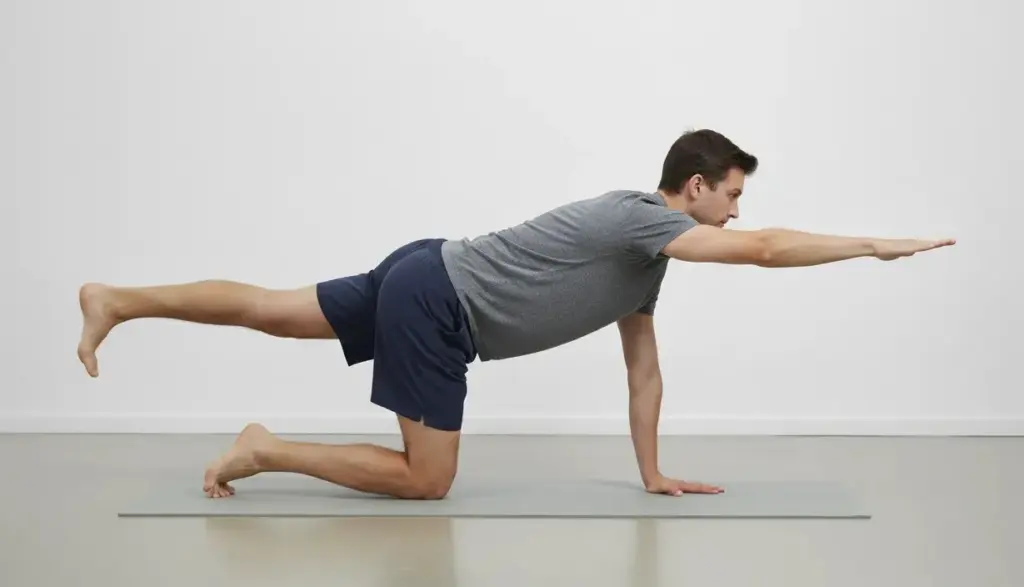
- On hands and knees, extend one arm forward and the opposite leg backward.
- Hold for 5–10 seconds, keeping your back stable.
- Repeat 8–10 times on each side.
5. Bridge Exercise
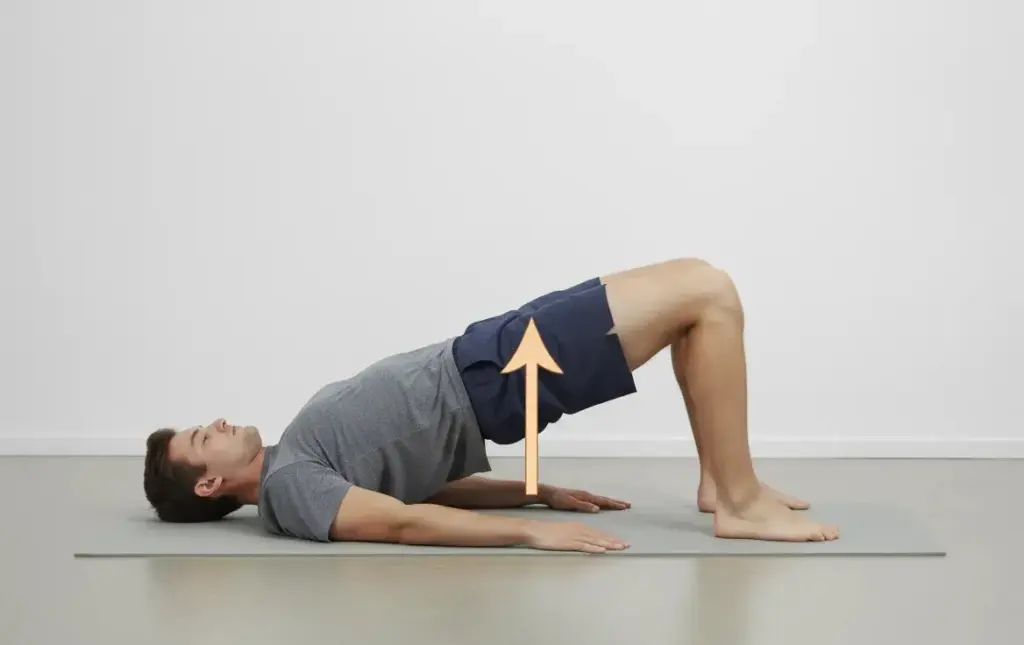
- Lie on your back with knees bent.
- Lift your hips toward the ceiling, squeezing your glutes.
- Hold for 5 seconds, then lower slowly.
- Repeat 10–15 times.
6. Seated Forward Bend (Hamstring Stretch)
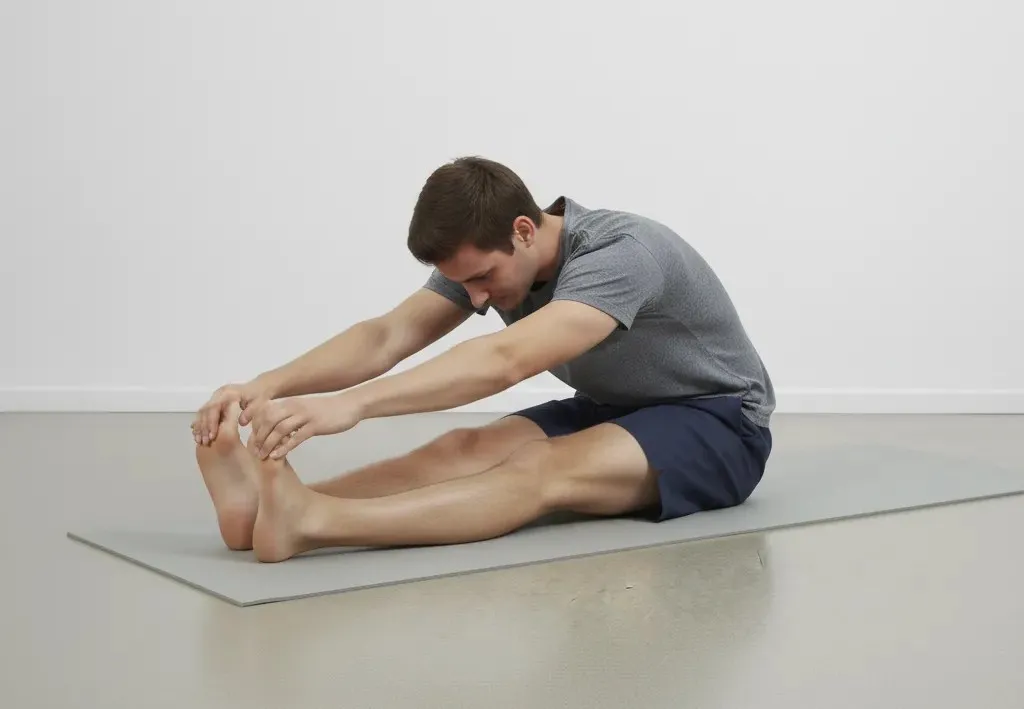
- Sit on the floor with one leg extended.
- Gently reach forward toward your toes, keeping your back straight.
- Hold 20–30 seconds per side.
- Tight hamstrings often contribute to lower back strain.
7. Partial Crunch (Core Stability)
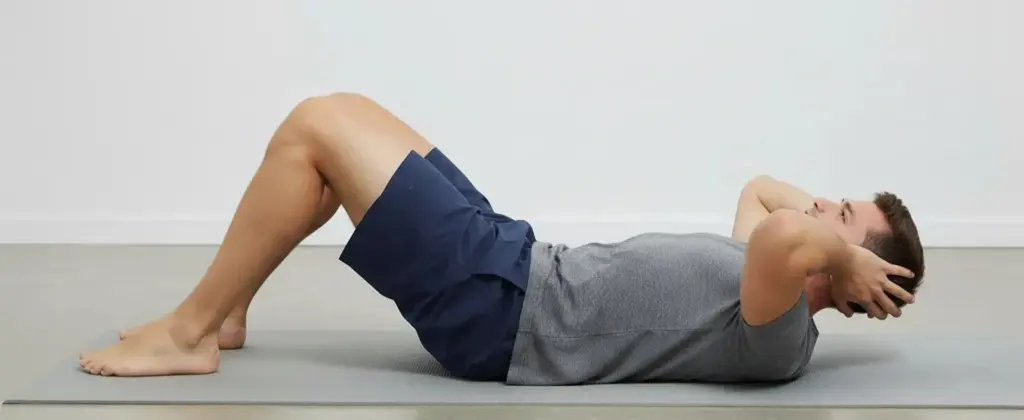
- Lie on your back, knees bent, feet flat.
- Cross arms over chest.
- Gently lift shoulders a few inches off the floor while keeping the lower back pressed down.
- Repeat 8–10 times.
8. Hip Flexor Stretch
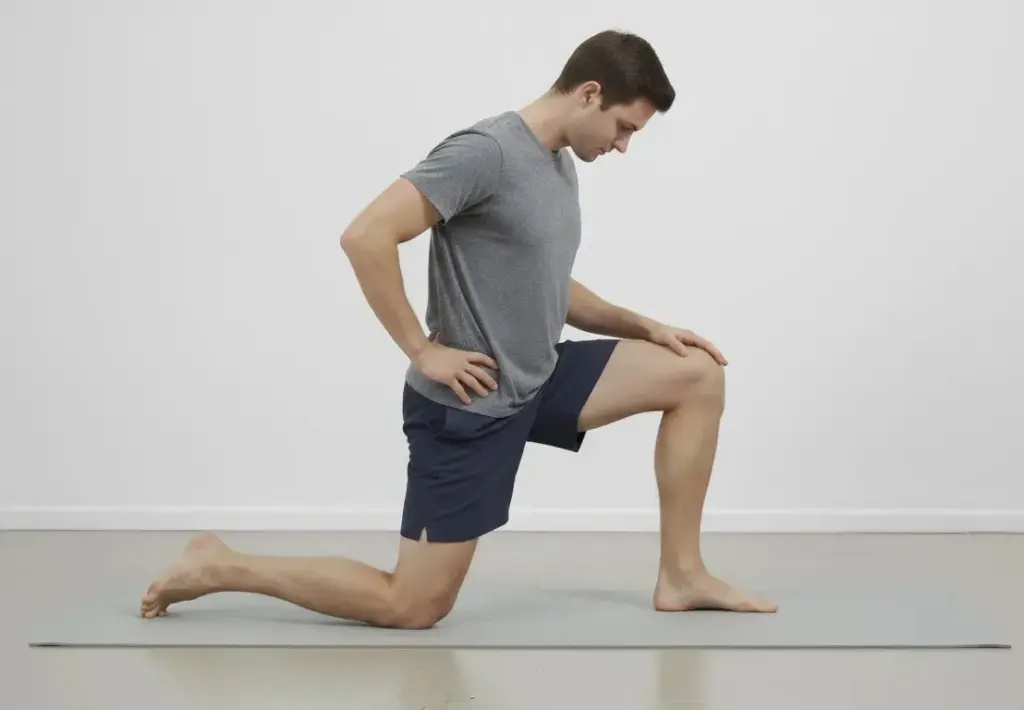
- Kneel on one knee with the other foot forward (lunge position).
- Gently push hips forward while keeping back straight.
- Hold 20–30 seconds on each side.
- Relieves tight hip flexors, which can worsen lower back pain.
9. Wall Sits
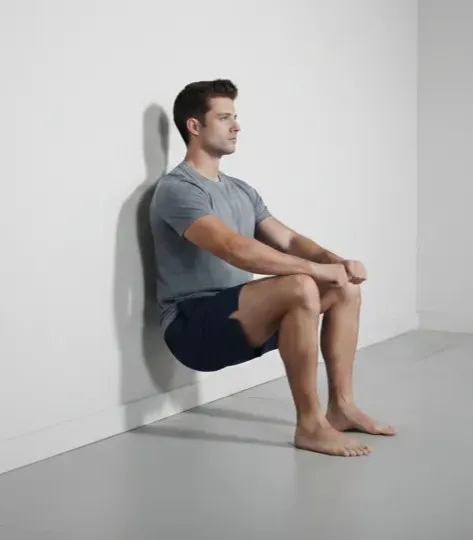
- Stand with your back against a wall.
- Slide down until your knees are bent at ~90 degrees.
- Hold for 10–15 seconds, then slowly rise.
- Repeat 5–10 times.
- Builds strength in glutes and thighs, supporting the lower back.
Conclusion
Back pain doesn’t disappear overnight, and anyone promising instant cures is likely overselling their approach. What physiotherapy offers instead is a proven method that tackles the real reasons behind the pain.
The key difference is that physiotherapy teaches people how to take control of their own recovery. This might involve calming down irritated nerves, building up muscles that have become weak, or changing everyday habits that put unnecessary stress on the spine. Many patients find they not only recover faster but also avoid future flare-ups because they understand how their body works.
When back pain starts interfering with normal activities or drags on for more than a few weeks, it’s time to get professional help. A physiotherapist can figure out what’s actually causing the problem and create a personalized plan that gets people back to doing what they love and keeps them there.

Amit Saraswat is the Founder of Physioveda Medical Center, a Dubai-based clinic focused on personalized physiotherapy and integrative healthcare. With a passion for patient-centric solutions, he leads the vision behind Physioveda’s evidence-based approach to pain relief and long-term recovery.

